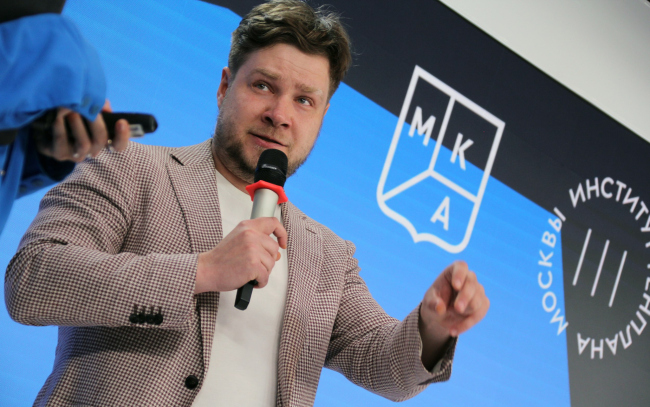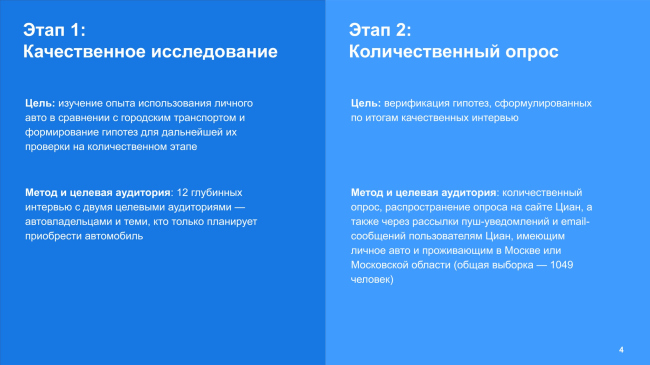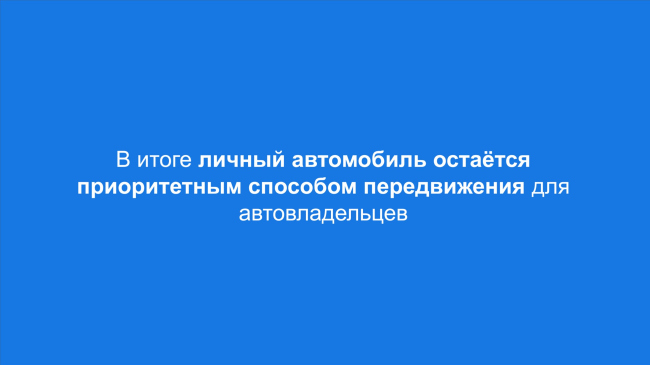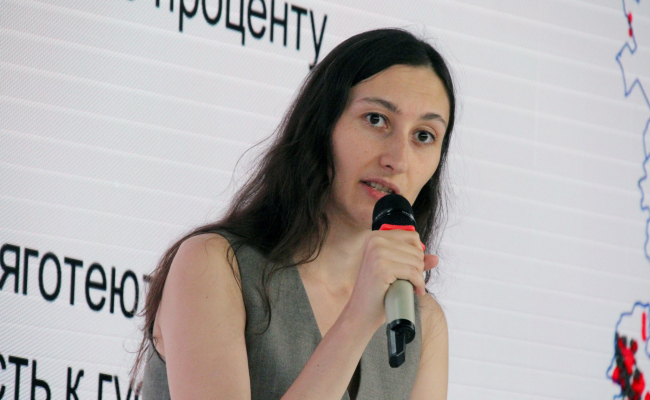|
Published on Archi.ru (https://archi.ru) |
|
| 25.11.2024 | |
|
Four Different Surveys |
|
|
Julia Tarabarina |
|
| Architect: | |
| Studio: | |
| Genplan Institute of Moscow | |
|
The “Explore the City” competition, organized this year by the Genplan Institute of Moscow, stands out as a pretty unconventional one for the architectural field but aligns perfectly well with the character of urban planning work. The winning project analyzed contemporary residential complexes, combining urban planning insights with a realtor’s perspective to propose a hybrid approach. Other entries explored public centers, motivations for car ownership, and housing vacancy rates. A fifth participant withdrew. Here’s a closer look at the four completed works. From April to September, the Genplan Institute of Moscow conducted a competition on what could be described as “unfamiliar territory” – namely, urban research. 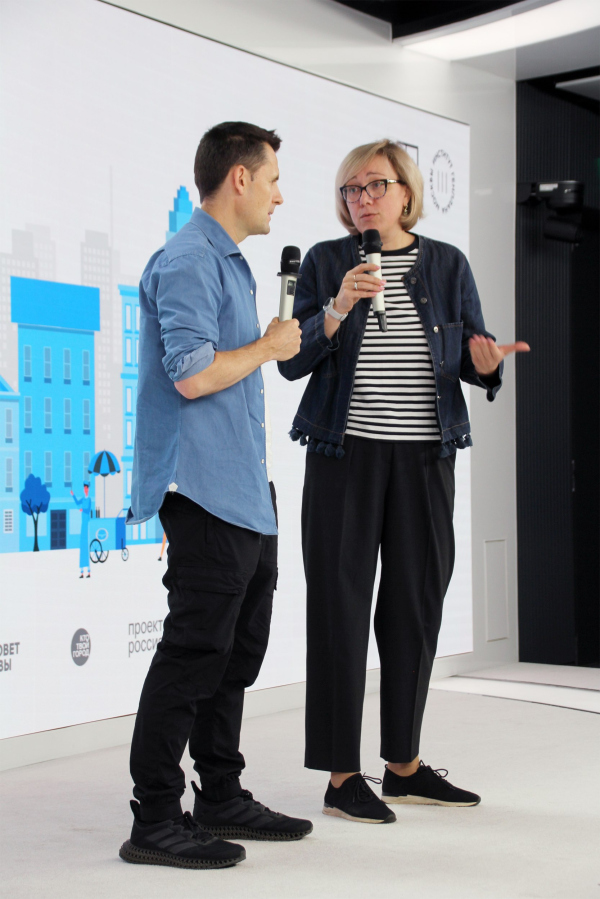 Sergey Kuznetsov and Tatyana Guk at the jury meeting. “Explore the City” competition, presentation of research results.Copyright: Photograph © Julia Tarabarina, Archi.ru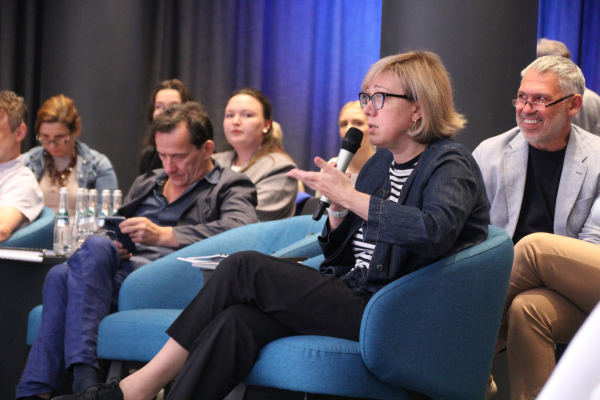 Tatiana Guk at the jury meeting. “Explore the City” competition, presentation of research results.Copyright: Photograph © Julia Tarabarina, Archi.ruJudging, it turned out, was not as challenging as we thought it would be. One project, by unanimous agreement, stood head and shoulders above the rest in terms of detail and originality. 1st place: A catalogue of residential environments Modern approaches to the spatial organization of residential areas Curators: Vitaly Lutz, Olga Blagodeteleva Team: A. Danilchenko, D. Medvedev, D. Pereyaslavtsev, V. Pomogaev, B. Savkin, A. Siraeva, S. Skotnikov, U. Suleymanova, A. Tolmachev Winning team. “Explore the City” competition, presentation of research results.Copyright: Photograph © Julia Tarabarina, Archi.ruThe winning team was large, enthusiastic, and impressively coherent. According to the participants, most of them met while studying at HSE University, and they came together specifically for this project but plan to collaborate further in the future. Proceeding from the stated task – “Developing architectural and urban planning approaches to creating a comfortable urban environment” – I somehow anticipated vague discussions about green spaces and park benches. In reality, however, the team, under the guidance of the Department of Prospective Studies led by Vitaly Lutz, created an original catalogue of residential complex “archetypes”. They introduced a new methodology that appears to combine two essential perspectives: architectural/urbanistic and market-oriented. As they explained, “Classes fail to reflect morphological diversity, while morphotypes overlook product variety”. It’s akin to layering two grids – and possibly three, incorporating perspectives from officials and regulatory bodies as well. This approach made their results not only substantial in volume (100 pages of presentation material) but also multi-dimensional. The research addresses three distinct audiences: (1) administrators – for decision-making and policy development, (2) residents – to assess and meet community needs, (3) designers – including architects and developers, to guide future projects.  , Genplan Institute of Moscow It is important to note that each survay has a practical purpose, which is crucial for the future application of its findings. The Catalogue of Residential Environments is an analysis of extensive data on housing construction over the past five years. The result offers not only a wealth of information about existing housing morphotypes and popular architectural solutions but, most importantly, a clear understanding of residents’ preferences regarding their living environment. Together, this data forms a ready-to-use tool for designers, which can be immediately applied in practice. One thing is clear: this is the kind of study that invites further exploration. It gives you the sense that you’re uncovering insights about both market dynamics and emerging trends. The conceptual framework proposed by the team is noteworthy in its own right. 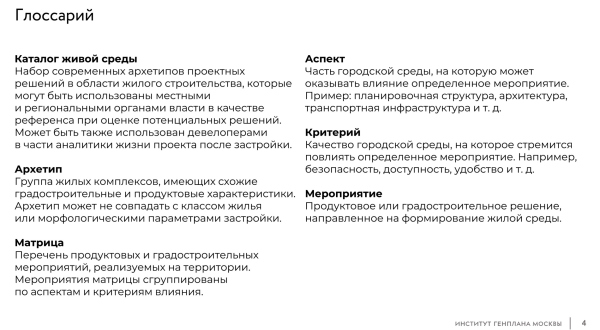 “Catalogue of residential environments” survey. The winnerCopyright: "Collective of 12«, »Explore the City!" competition, Genplan Institute of Moscow, 2024.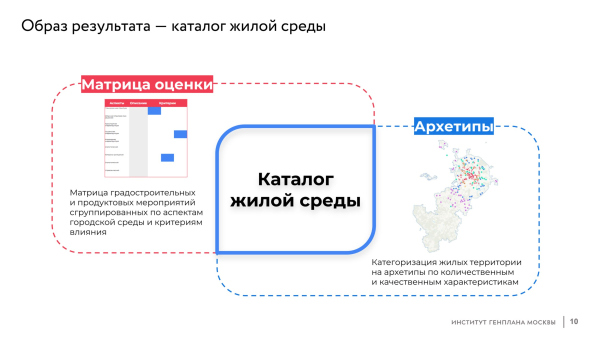 “Catalogue of residential environments” survey. The winnerCopyright: “Center” Agency, "Explore the City!" competition, Genplan Institute of Moscow, 2024The participants developed a survey matrix, identified 94 parameters for evaluation, analyzed 23 residential complexes, and defined seven housing archetypes for Moscow from 2019 onward. They noted that while the matrix itself remains stable, the archetypes seem to evolve almost in real-time. The authors also referenced international examples, contrasting practices in the Netherlands and Uzbekistan, and included insights from Russian regions. Their work culminated in 11 pages summarizing residential market trends.  “Catalogue of residential environments” survey. The winnerCopyright: Photograph © Julia Tarabarina, Archi.ru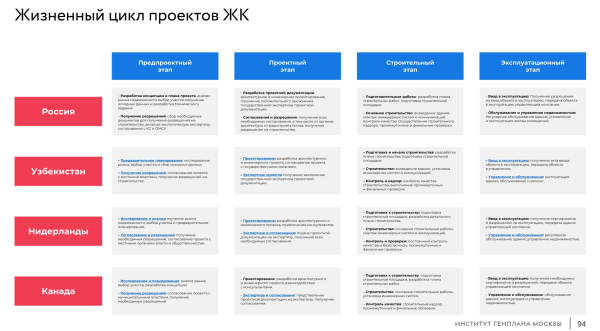 “Catalogue of residential environments” survey. The winnerCopyright: "Collective of 12«, »Explore the City!" competition, Genplan Institute of Moscow, 2024.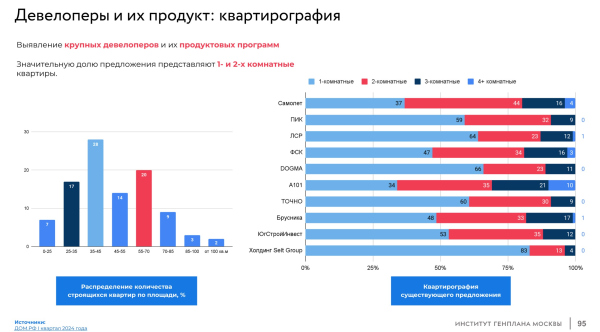 “Catalogue of residential environments” survey. The winnerCopyright: "Collective of 12«, »Explore the City!" competition, Genplan Institute of Moscow, 2024.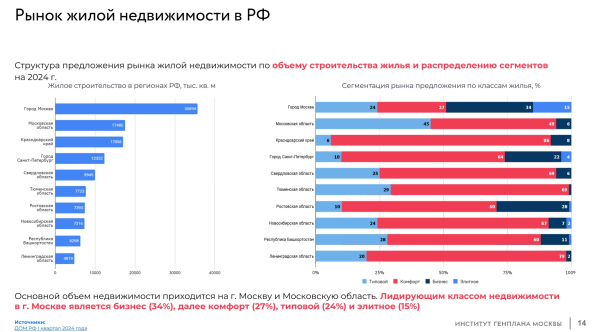 “Catalogue of residential environments” survey. The winnerCopyright: "Collective of 12«, »Explore the City!" competition, Genplan Institute of Moscow, 2024.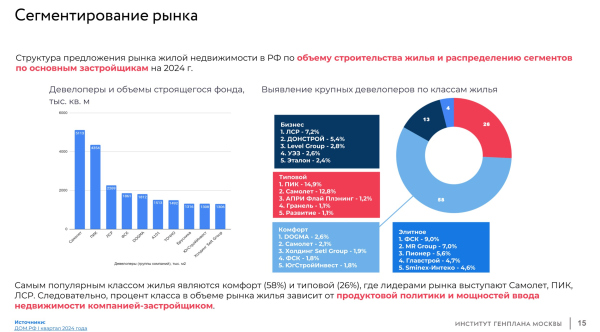 “Catalogue of residential environments” survey. The winnerCopyright: "Collective of 12«, »Explore the City!" competition, Genplan Institute of Moscow, 2024.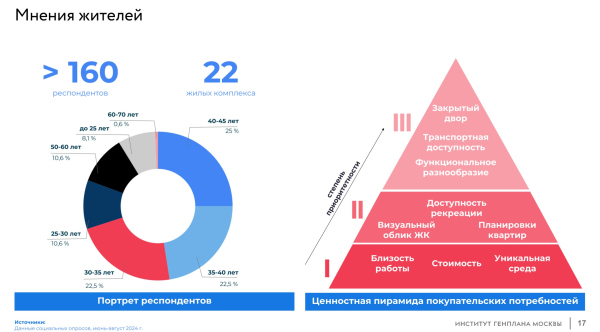 “Catalogue of residential environments” survey. The winnerCopyright: "Collective of 12«, »Explore the City!" competition, Genplan Institute of Moscow, 2024. “Catalogue of residential environments” survey. The winnerCopyright: "Collective of 12«, »Explore the City!" competition, Genplan Institute of Moscow, 2024.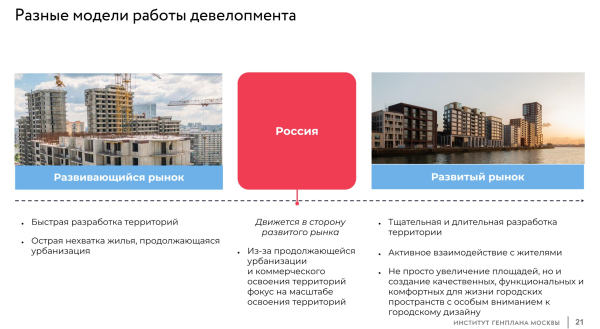 “Catalogue of residential environments” survey. The winnerCopyright: "Collective of 12«, »Explore the City!" competition, Genplan Institute of Moscow, 2024. “Catalogue of residential environments” survey. The winnerCopyright: "Collective of 12«, »Explore the City!" competition, Genplan Institute of Moscow, 2024. “Catalogue of residential environments” survey. The winnerCopyright: "Collective of 12«, »Explore the City!" competition, Genplan Institute of Moscow, 2024.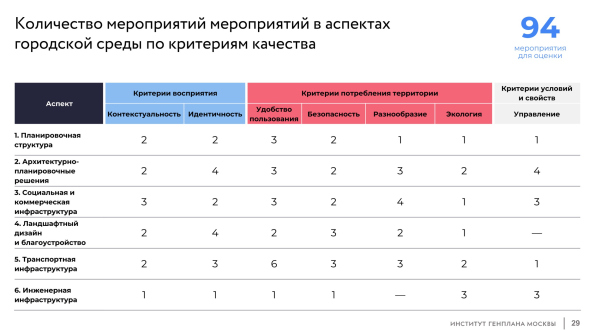 “Catalogue of residential environments” survey. The winnerCopyright: "Collective of 12«, »Explore the City!" competition, Genplan Institute of Moscow, 2024.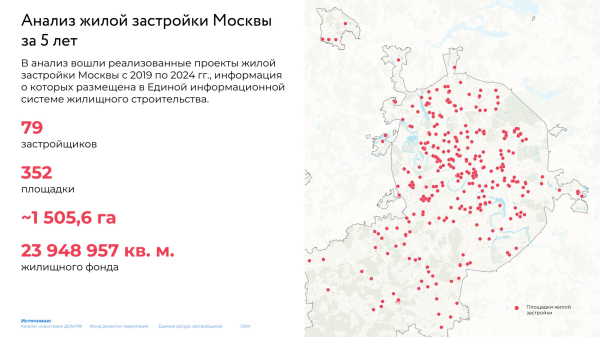 “Catalogue of residential environments” survey. The winnerCopyright: "Collective of 12«, »Explore the City!" competition, Genplan Institute of Moscow, 2024.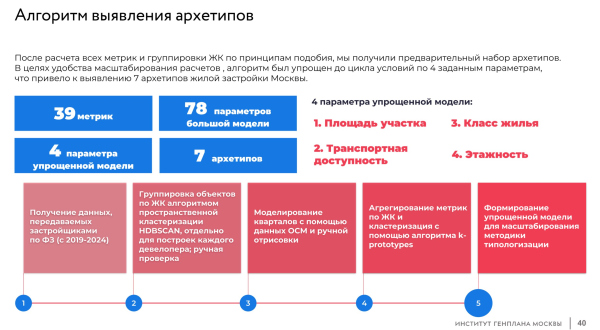 “Catalogue of residential environments” survey. The winnerCopyright: "Collective of 12«, »Explore the City!" competition, Genplan Institute of Moscow, 2024.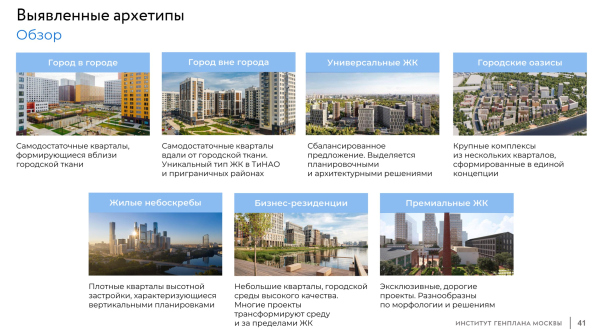 “Catalogue of residential environments” survey. The winnerCopyright: "Collective of 12«, »Explore the City!" competition, Genplan Institute of Moscow, 2024. “Catalogue of residential environments” survey. The winnerCopyright: "Collective of 12«, »Explore the City!" competition, Genplan Institute of Moscow, 2024.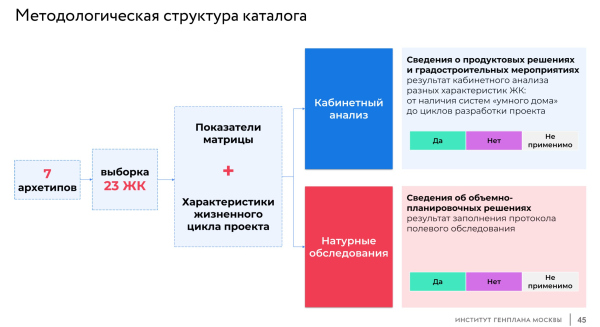 “Catalogue of residential environments” survey. The winnerCopyright: "Collective of 12«, »Explore the City!" competition, Genplan Institute of Moscow, 2024. “Catalogue of residential environments” survey. The winnerCopyright: "Collective of 12«, »Explore the City!" competition, Genplan Institute of Moscow, 2024.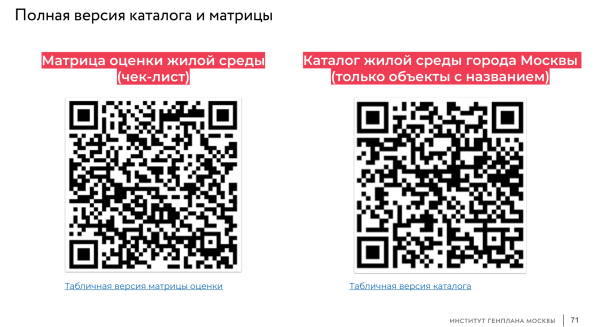 “Catalogue of residential environments” survey. The winnerCopyright: "Collective of 12«, »Explore the City!" competition, Genplan Institute of Moscow, 2024.The seven archetypes are:
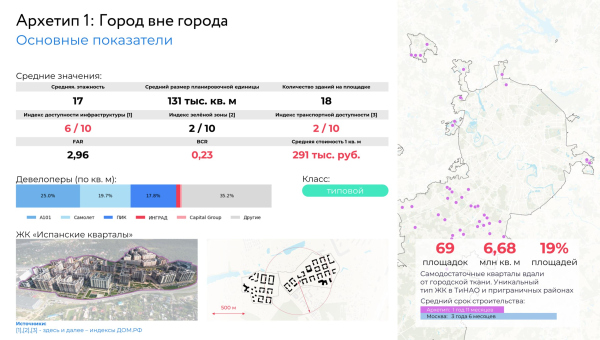 “Catalogue of residential environments” survey. The winnerCopyright: "Collective of 12«, »Explore the City!" competition, Genplan Institute of Moscow, 2024.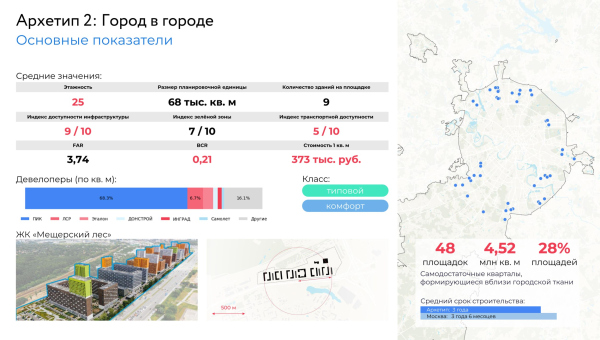 “Catalogue of residential environments” survey. The winnerCopyright: "Collective of 12«, »Explore the City!" competition, Genplan Institute of Moscow, 2024.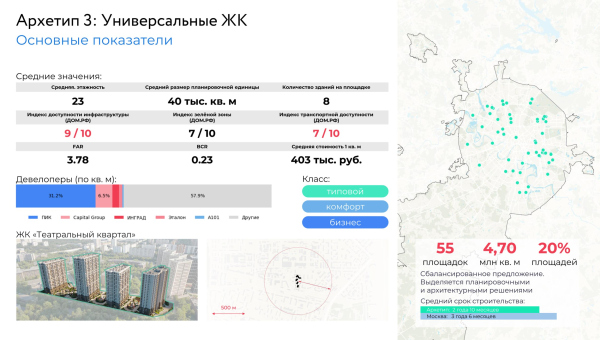 “Catalogue of residential environments” survey. The winnerCopyright: "Collective of 12«, »Explore the City!" competition, Genplan Institute of Moscow, 2024.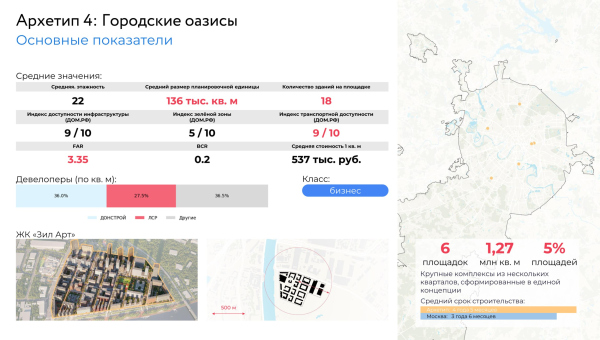 “Catalogue of residential environments” survey. The winnerCopyright: "Collective of 12«, »Explore the City!" competition, Genplan Institute of Moscow, 2024.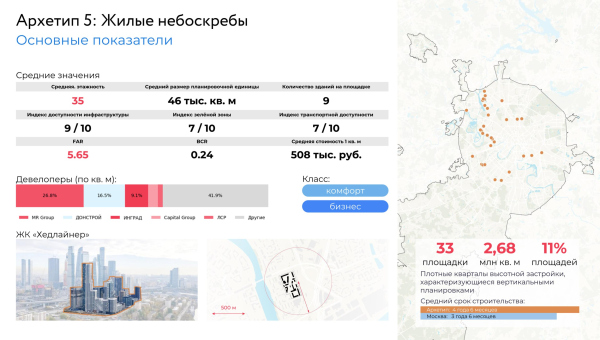 “Catalogue of residential environments” survey. The winnerCopyright: "Collective of 12«, »Explore the City!" competition, Genplan Institute of Moscow, 2024. “Catalogue of residential environments” survey. The winnerCopyright: "Collective of 12«, »Explore the City!" competition, Genplan Institute of Moscow, 2024.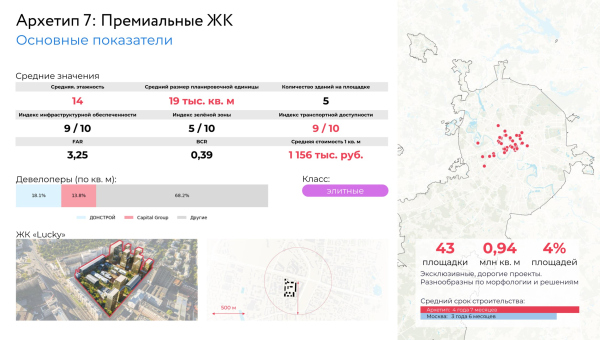 “Catalogue of residential environments” survey. The winnerCopyright: "Collective of 12«, »Explore the City!" competition, Genplan Institute of Moscow, 2024.The authors cited an impressive range of previous studies, highlighting as a close comparison a project by KB Strelka on urban renewal (commissioned by DOM.RF). They also outlined plans for the future, presenting the research in a more user-friendly format, such as a landing page for potential buyers, conducting a survey of at least 1 500 residents to ensure a representative sample, and avoiding unnecessary tools, like a mobile app, which they deemed excessive. They drew a careful comparison between the American form-based code and Moscow’s land use and development rules, describing the latter as more dynamic and flexible – neither approach being inherently superior. This measured perspective speaks to the authors’ clear understanding of their work and its broader context. The team’s potential is undeniable, and the Genplan Institute of Moscow may well seek to collaborate with them again in the future. As for the title, the competition’s nomination originally included the term “living environment,” but the study honed this to the more specific “residential environment”. It’s rare to see a shift toward greater precision in such cases – usually, it’s the opposite. The research results are available online as an XLS spreadsheet. Notably, the Matrix and Catalogue are located on separate tabs within the same file.  Yury Sheredega, architect, partner and co-founder of the Sheredega Consulting project consulting bureau. In the context of the urban development boom we are witnessing, it is essential to support not only the creative but also the scientific aspects of urban planning projects. Unfortunately, examples of post-project studies are exceedingly rare. However, reflecting on existing experiences provides valuable insights into how our projects influence the urban environment after their implementation. Experimental research can yield both positive and negative results, helping us assess the current state of affairs and chart a course for future progress. 2nd Place City within a city Local community centers in the peripheral areas of the city Curator: Dmitry Nekrasov, Head of the Department of Strategic Planning and Urban Development Economics at the Genplan Institute of Moscow. Authors and leads: Sergey Georgievsky, Ketevan Khelaya, Olga Gritsan, Maria Sedletskaya. Team members: Territorial Planning – Alexandra Yaderskaya, Julia Vedenina; Architecture – Yana Ness; GIS Analytics – Sergey Biryukov; Economics – Timur Baychurin; Sociocultural Programming – Andrey Vashchuk; Sociology – Pavel Stepantsov, Julia Stepantsova, Ekaterina Sakharova, Yana Kruglik, Anastasia Kuznetsova; Materials Design – Denis Dmitrienko, Grigory Guslitskov. “Catalogue of residential environments” survey. The winnerCopyright: Photograph © Julia Tarabarina, Archi.ruThe second team was significantly larger, consisting of 17 members compared to the 11 of the “Collective of 12”, including curators. The professional expertise of the Agency “Center” is beyond doubt, making their selection as participants a seemingly foolproof decision. Their urban research methods and principles are well-honed. The survey begins with an extensive definition of Moscow’s periphery as such. To “find” the periphery, the authors identify six city-level centers: in addition to the Kremlin, these include the Moscow International Business Center (MIBC or “Moscow City”), VDNKh, Serp i Molot (likely referring to the residential complex “Symbol”), ZIL, the upcoming Shagal residential complex in Nagatino, and the Southern Port, which is currently more of a planned center than a reality. This initial exploration shows that Moscow already has so-called “polycenters”. From here, the study narrows its focus using purchasing activity data, particularly billing transaction concentrations. Out of 11 identified territories, the authors select two “model” areas for detailed analysis. These areas are chosen for their relative distance from established centers and their “semi-enclave” status, indicating varying degrees of isolation from the city. 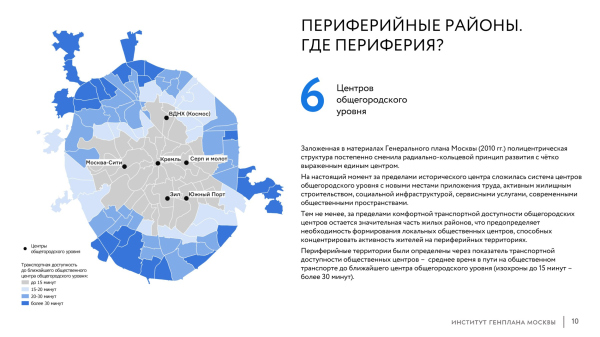 The “City within a City” project. 2nd placeCopyright: “Center” Agency, "Explore the City!" competition, Genplan Institute of Moscow, 2024. The “City within a City” project. 2nd placeCopyright: “Center” Agency, "Explore the City!" competition, Genplan Institute of Moscow, 2024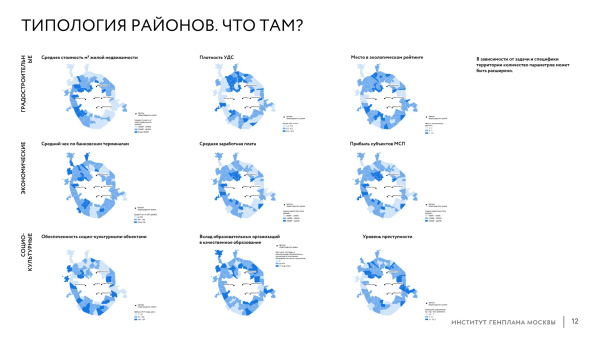 The “City within a City” project. 2nd placeCopyright: “Center” Agency, "Explore the City!" competition, Genplan Institute of Moscow, 2024 The “City within a City” project. 2nd placeCopyright: “Center” Agency, "Explore the City!" competition, Genplan Institute of Moscow, 2024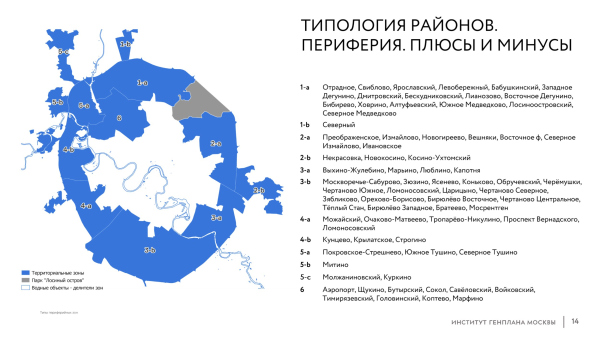 The “City within a City” project. 2nd placeCopyright: “Center” Agency, "Explore the City!" competition, Genplan Institute of Moscow, 2024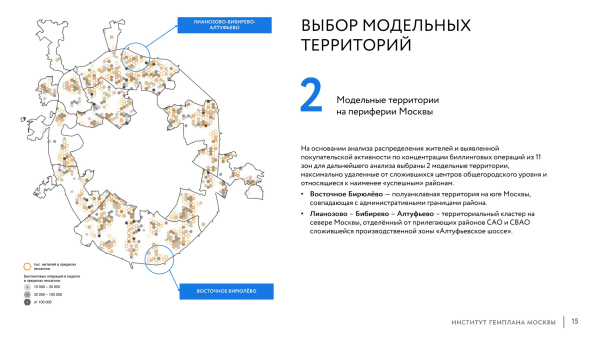 The “City within a City” project. 2nd placeCopyright: “Center” Agency, "Explore the City!" competition, Genplan Institute of Moscow, 2024In the south, the selected area is East Biryulyovo; in the north, it is the Lianozovo-Bibirevo-Altufyevo cluster. 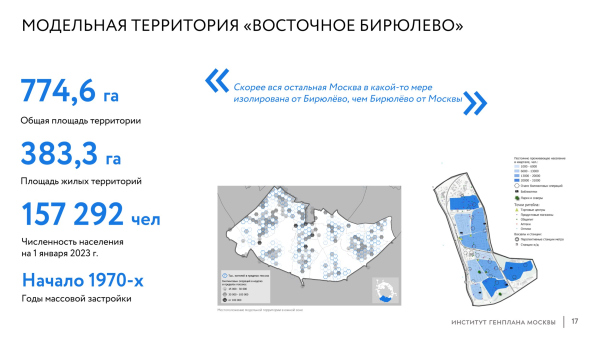 The eastern Biryulevo. The “City within a City” project. 2nd placeCopyright: “Center” Agency, "Explore the City!" competition, Genplan Institute of Moscow, 2024.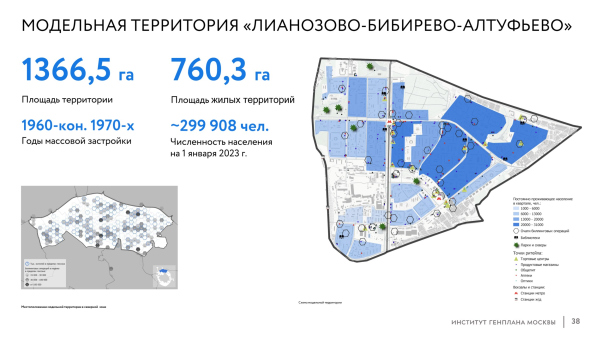 Lianozovo-Bibirevo-Altufyevo. The “City within a City” project. 2nd placeCopyright: “Center” Agency, "Explore the City!" competition, Genplan Institute of Moscow, 2024The authors conducted on-site filming and interviewed local residents. Conclusions: the more isolated an area is, the less successful and more dismal it becomes. The situation in Biryulyovo is notably worse than in Bibirevo. Biryulyovo, being a more isolated district, suffers acutely from the lack of a metro station – a long-awaited development hindered by a mysterious underground route. It is unlikely that the ongoing construction of the “Meeting Place” complex on the site of the former Chkalov plant will solve this issue. Unsurprisingly, the study reaffirmed a familiar fact: public centers in remote districts are largely limited to shopping malls, residential complexes, fitness centers, and children’s creativity hubs – with little progress beyond that. 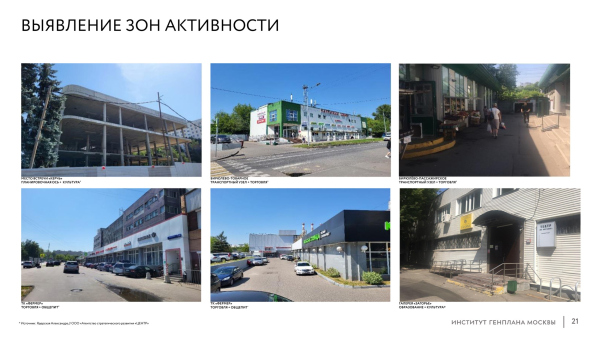 The eastern Biryulevo. The “City within a City” project. 2nd placeCopyright: “Center” Agency, "Explore the City!" competition, Genplan Institute of Moscow, 2024.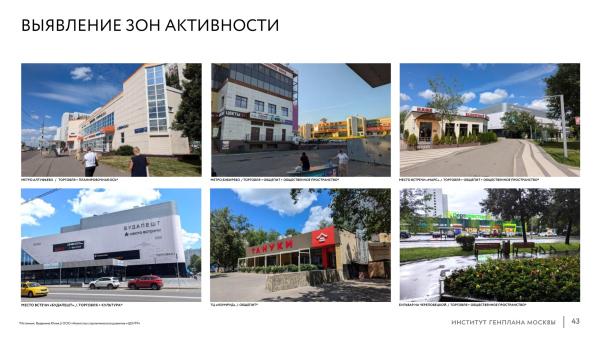 Lianozovo-Bibirevo-Altufyevo. The “City within a City” project. 2nd placeCopyright: “Center” Agency, "Explore the City!" competition, Genplan Institute of Moscow, 2024A striking observation was made by Olga Gritsan, Head of the Analytics Department at the Strategic Development Agency “CENTER”: “I live in the Moscow Region town of Ramenskoye and was unpleasantly surprised to find that public spaces in Biryulyovo are less developed than those in the Moscow suburbs.” On the other hand, Bibirevo’s “Park of Light” was vandalized. Conclusions and recommendations under the caption “Local Centers: Formula for Success” occupy about a fifth of the study, presented in the form of diagrams and tables of potential resident demands.  Vision for the development of local peripheral centers. The “City within a City” project. 2nd placeCopyright: “Center” Agency, "Explore the City!" competition, Genplan Institute of Moscow, 2024.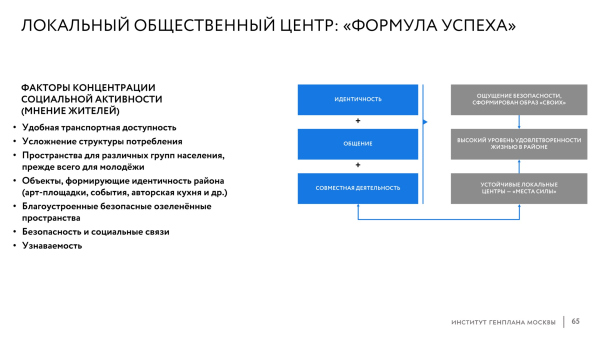 Vision for the development of local peripheral centers. The “City within a City” project. 2nd placeCopyright: “Center” Agency, "Explore the City!" competition, Genplan Institute of Moscow, 2024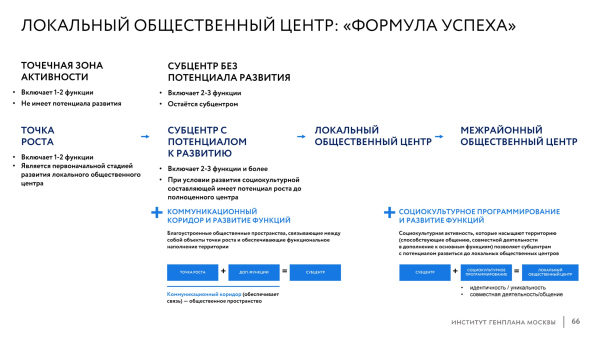 Vision for the development of local peripheral centers. The “City within a City” project. 2nd placeCopyright: “Center” Agency, "Explore the City!" competition, Genplan Institute of Moscow, 2024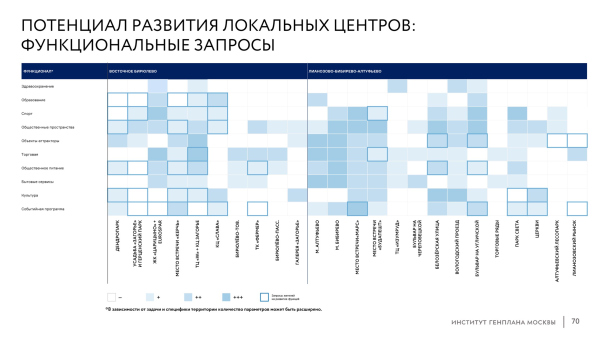 Vision for the development of local peripheral centers. The “City within a City” project. 2nd placeCopyright: “Center” Agency, "Explore the City!" competition, Genplan Institute of Moscow, 2024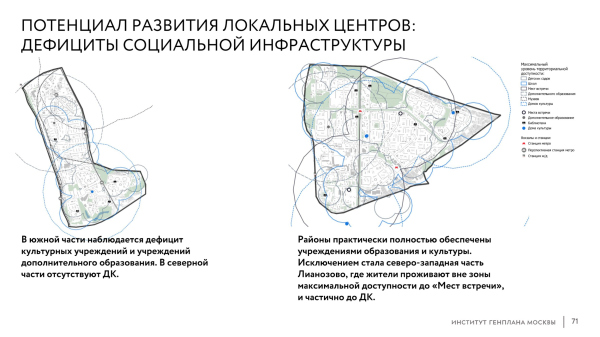 Vision for the development of local peripheral centers. The “City within a City” project. 2nd placeCopyright: “Center” Agency, "Explore the City!" competition, Genplan Institute of Moscow, 2024 Vision for the development of local peripheral centers. The “City within a City” project. 2nd placeCopyright: “Center” Agency, "Explore the City!" competition, Genplan Institute of Moscow, 2024 Vision for the development of local peripheral centers. The “City within a City” project. 2nd placeCopyright: “Center” Agency, "Explore the City!" competition, Genplan Institute of Moscow, 2024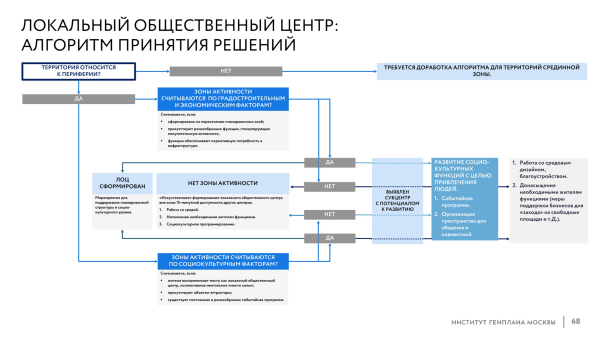 Vision for the development of local peripheral centers. The “City within a City” project. 2nd placeCopyright: “Center” Agency, "Explore the City!" competition, Genplan Institute of Moscow, 2024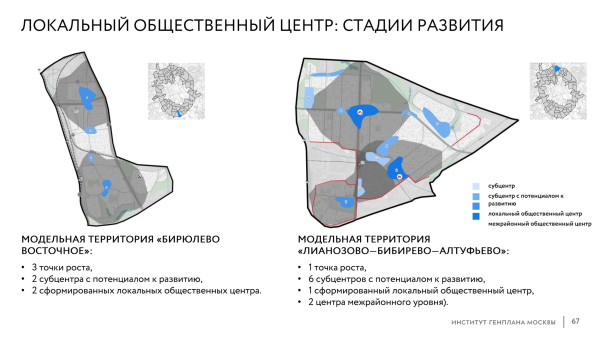 Vision for the development of local peripheral centers. The “City within a City” project. 2nd placeCopyright: “Center” Agency, "Explore the City!" competition, Genplan Institute of Moscow, 2024The authors even make an attempt to scale their findings to other cities, using Pskov and Vyazma as examples. The research appears extensive and detailed, featuring quotes, diagrams, lists, and statistics. It also incorporates positive, modern approaches tested in central areas of the city: transitioning from mono- to multifunctionality, promoting resident engagement, ensuring 15-minute accessibility, and considering various aspects of “centrality”, from economic to cultural. Attention is also given to residents’ concerns about citywide improvements potentially erasing local identity and personal connections to their neighborhoods. Nevertheless, the emergence of new public centers on the periphery does not paint a particularly bright picture. Footage reveals that the only example of contemporary architecture in this context comes from cultural centers in the “39 Cinemas” program. These are clean and appealing but predominantly function as shopping malls – firstly – and, secondly, they are all uniform or visually similar, giving the impression of a standardized design. However, perhaps this is only the beginning of a longer journey. 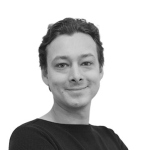 Kirill Puzanov, Academic Supervisor of the Master′s Program “Digital Urbanism and City Analytics” at the National Research University Higher School of Economics (HSE). Competitions that challenge us with new questions play a key role in advancing both science and practice. We should welcome such initiatives and hope that scientific research will once again become the starting point for future projects. It is crucial that the outcomes of these competitions do not go unnoticed: they must be shared with a wider audience and the expert community to spark new discussions and raise pressing issues. 3rd Place What do you need a car for? A study of the motivations behind car ownership Curator: Natalia Karmadonova, Head of the Transport Systems Planning Workshop Participants: Anastasia Pirotskaya, Ksenia Radygina, Ekaterina Nichaeva, Daria Pudovkina, Ekaterina Tsimbota 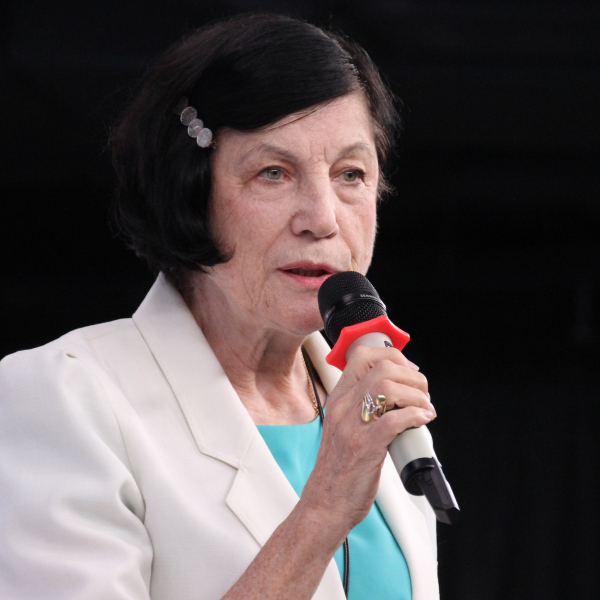 Elena Borovik, Chief Project Engineer at the Transport Engineering Center of the Genplan Institute. “Explore the City” competition, presentation of research results.Copyright: Photograph © Julia Tarabarina, Archi.ru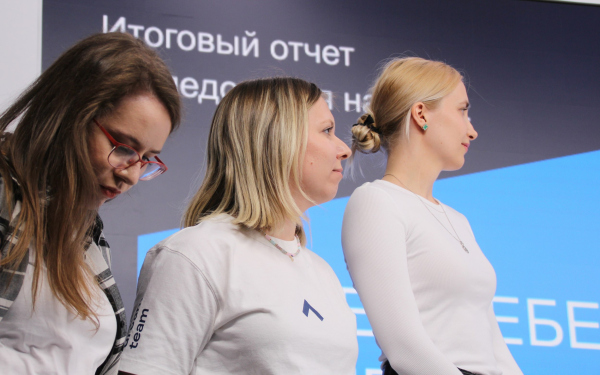 Team 3: CIAN. “Explore the City” competition, presentation of research results.Copyright: Photograph © Julia Tarabarina, Archi.ruTo be quite honest, as a car owner myself, I found the topic somewhat predetermined in its conclusions. You know how questions like “why” or “for what purpose” are often framed to lead you toward a desired answer? In this case, it feels like the underlying message is that cars are unnecessary, that cars are evil, yet some irrational city dwellers continue to hold onto them for purely egoistic reasons. According to the authors, there are about 4 million cars in Moscow – or 5 million if you count commuters from the suburbs. That’s too many, they say... From a driver’s perspective, this framing can feel biased, as if the next step might involve efforts to reduce car usage – like raising parking fees, for example. Parking in Moscow’s Kitay-Gorod area in the center of the city already costs 600 rubles per hour. So! The research team from CIAN split their study into two parts: qualitative and quantitative. The first included personal experiences and 12 in-depth interviews, while the second involved surveys of CIAN’s service users, with approximately 1000 responses collected. I share the jury’s sentiment that this sample size is insufficient; it seems the team relied too heavily on the internal capabilities of their own system. "What do you need a car for?" survey. 3rd placeCopyright: “CIAN” team, "Explore the City!" competition, Genplan Institute of Moscow, 2024.After presenting several tables to confirm some basic intuitions – that driving is more comfortable, especially with children, for shopping, and when heading out of the city... 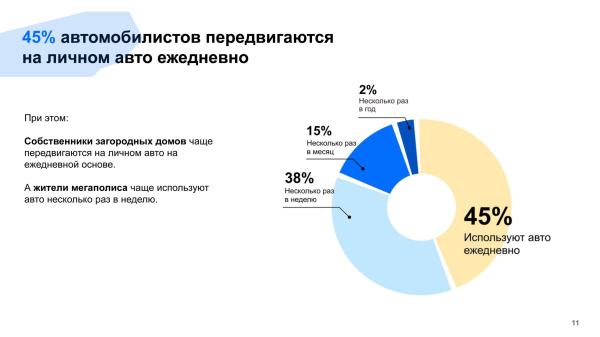 "What do you need a car for?" survey. 3rd placeCopyright: “CIAN” team, "Explore the City!" competition, Genplan Institute of Moscow, 2024.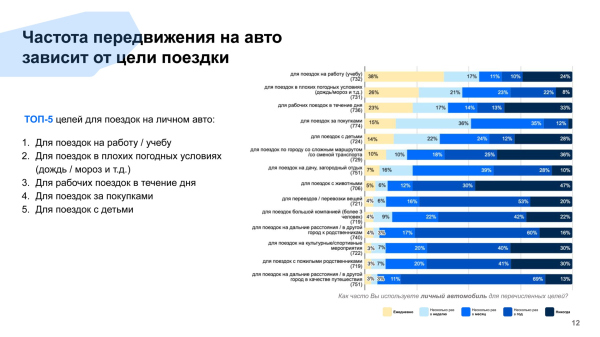 "What do you need a car for?" survey. 3rd placeCopyright: “CIAN” team, "Explore the City!" competition, Genplan Institute of Moscow, 2024. "What do you need a car for?" survey. 3rd placeCopyright: “CIAN” team, "Explore the City!" competition, Genplan Institute of Moscow, 2024.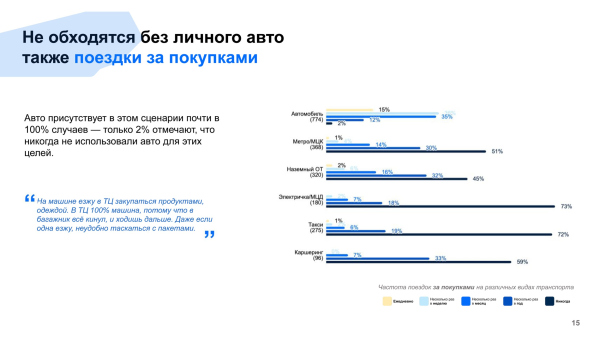 "What do you need a car for?" survey. 3rd placeCopyright: “CIAN” team, "Explore the City!" competition, Genplan Institute of Moscow, 2024.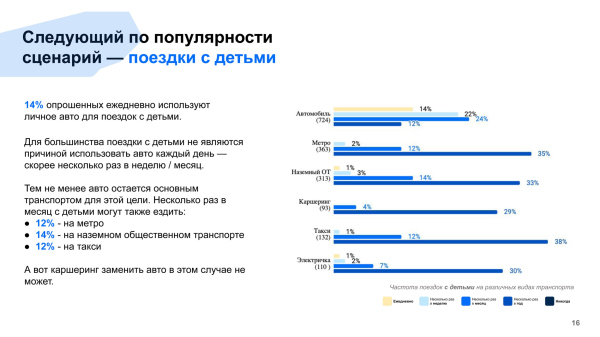 "What do you need a car for?" survey. 3rd placeCopyright: “CIAN” team, "Explore the City!" competition, Genplan Institute of Moscow, 2024.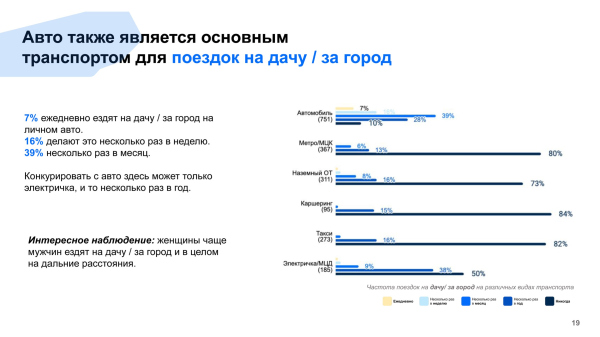 "What do you need a car for?" survey. 3rd placeCopyright: “CIAN” team, "Explore the City!" competition, Genplan Institute of Moscow, 2024.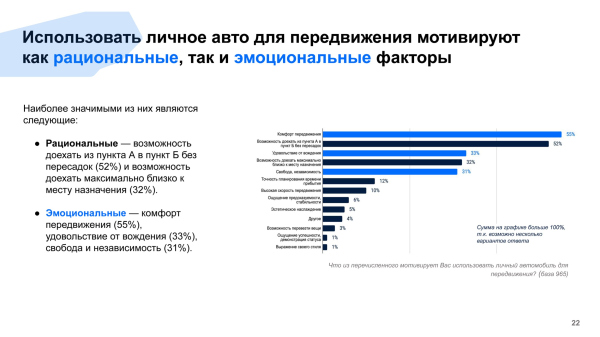 "What do you need a car for?" survey. 3rd placeCopyright: “CIAN” team, "Explore the City!" competition, Genplan Institute of Moscow, 2024.The authors cometo a simple conclusion: "What do you need a car for?" survey. 3rd placeCopyright: “CIAN” team, "Explore the City!" competition, Genplan Institute of Moscow, 2024.People use their own cars for commuting to work or school, shopping, and with children. Choosing public transport, on the other hand, is a rational decision to avoid traffic jams and calculate routes more efficiently. However, improvements in the frequency and comfort of public transportation in recent years also play a role. Still, for emotional reasons, people are more likely to choose scooters and bicycles. All of this is true and aligns with personal intuitions – at least mine. This leads to the question: why conduct a study just to confirm what is already obvious? Probably anticipating the intuitive nature of their conclusions, the authors accompanied their presentation with a small “mise en scène” featuring two characters: a woman with children and a man without, which brought some liveliness to the expert defense session. 4th place “Light in the window” Determining the Vacancy of Residential Housing Curator: Grigory Yushin, Head of Data Analytics for Territorial Planning; Denis Murataev Participants: Team “Urban Helper”: Pavel Semin, Tatyana Baltyzhakova, Julia Rodikova, Valeria Palich, Vyacheslav Ivanis, Ulyana Zudilova, Yesilzaveta Evrasova Yulia Rodikova. “Explore the City” competition, presentation of research results.Copyright: Photograph © Julia Tarabarina, Archi.ruThe project was presented by Julia Rodikova, who introduced herself as the leader, occasionally communicating via video link with some mysterious Pasha, whom she referred to as the author of the algorithm. UPD 25.11.2024: Some project authors like to request revisions after their text is published. “Urban Helper” is one of these teams. For example, Julia Rodikova asked us to correct the text several times, such as: “It would also be polite for you to refer to the author not as “Pasha”, as I called my AI during the presentation, but as Pavel Semin, as he is listed among the authors”. We are correcting that. The algorithm’s author is evidently Pavel Semin. However, what “my AI” refers to remains a mystery to this day. Was it named after the algorithm’s author? The questions seem to multiply. After providing examples of similar foreign studies and evaluating their applicability... 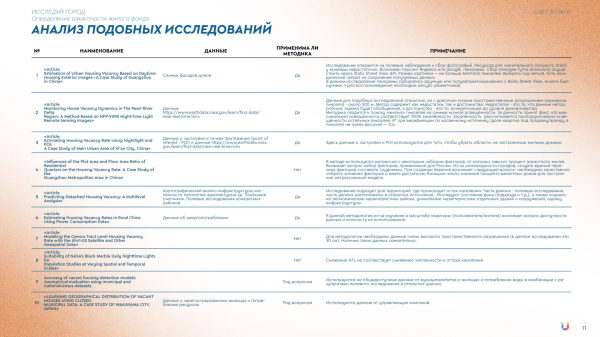 “Light in the Window”. 4th placeCopyright: “Urban Helper” team, "Explore the City!" competition, Genplan Institute of Moscow, 2024.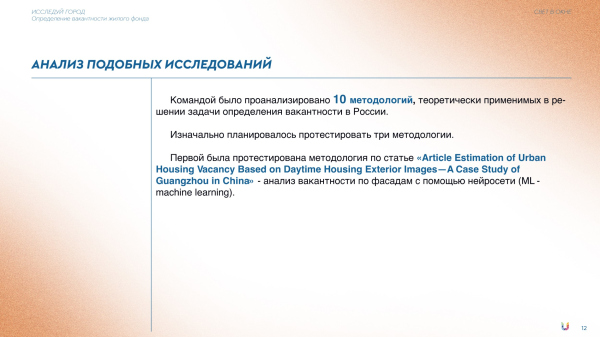 “Light in the Window” 4th placeCopyright: “Urban Helper” team, "Explore the City!" competition, Genplan Institute of Moscow, 2024.The authors chose an analysis method based on the type of balconies, focused on the most common panel building series I-515, and then: they took panoramic shots from Yandex, marked them, made assumptions about the occupancy of the apartment, and classified the images – all manually. They did, however, use a pre-trained model called Segment Anything. Information about the model is provided here. The link to its description and code, however, is no longer valid. UPD 25.11.2024: Julia Rodikova, again, sent us a link that she described as valid. Here it is. Next, the authors discuss their methodology for determining the vacancy of apartments, highlighting the use of open data and the relative simplicity of the calculations as its advantages. Without pretending to fully understand the reasoning behind Moran’s index, which underlies spatial autocorrelation and allows the authors to bring together several assumptions, I’ll just note that the link to the code for their methodology works, and here it is. The maps and analytics are available here. It’s quite interesting to review them, for example, it shows that Kommunarka leads in apartment vacancy, and that vacancy increases progressively to the southwest. 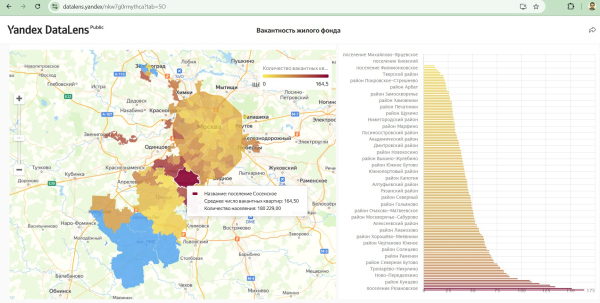 “Light in the Window”. 4th placeCopyright: “Urban Helper” team, "Explore the City!" competition, Genplan Institute of Moscow, 2024.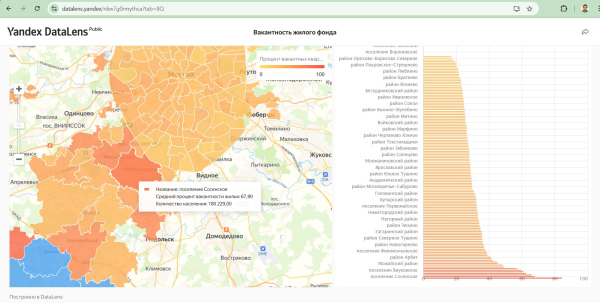 “Light in the Window”. 4th placeCopyright: “Urban Helper” team, "Explore the City!" competition, Genplan Institute of Moscow, 2024. “Light in the Window” 4th placeCopyright: “Center” Agency, "Explore the City!" competition, Genplan Institute of Moscow, 2024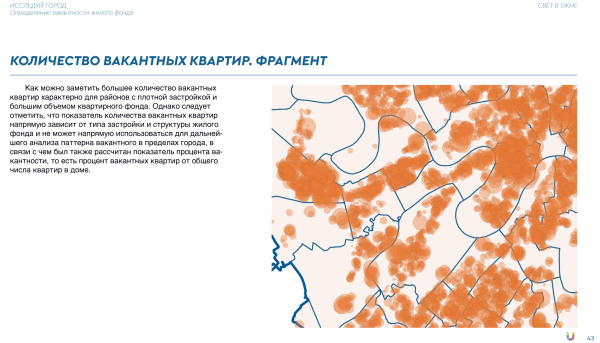 “Light in the Window” 4th placeCopyright: “Urban Helper” team, "Explore the City!" competition, Genplan Institute of Moscow, 2024.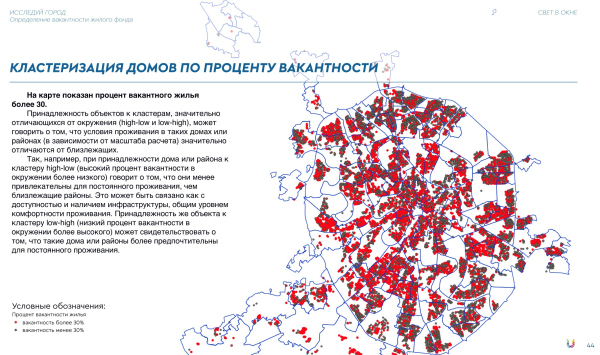 “Light in the Window” 4th placeCopyright: “Urban Helper” team, "Explore the City!" competition, Genplan Institute of Moscow, 2024.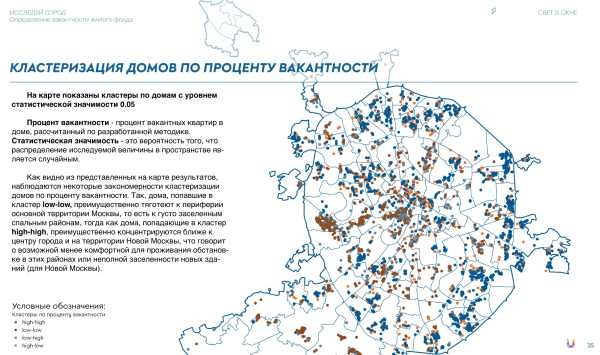 “Light in the Window” 4th placeCopyright: “Urban Helper” team, "Explore the City!" competition, Genplan Institute of Moscow, 2024.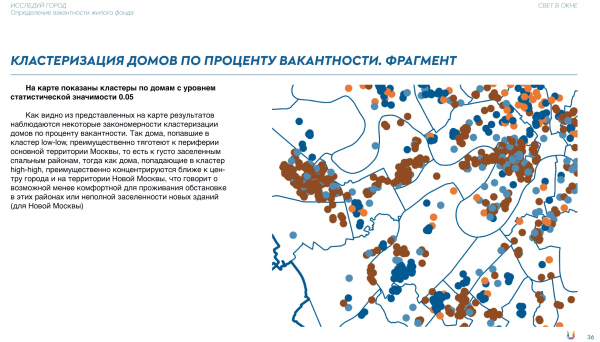 “Light in the Window” 4th placeCopyright: “Urban Helper” team, "Explore the City!" competition, Genplan Institute of Moscow, 2024.I still cherish hope that the data presented is indeed justified. However, it is hard to rely on its absolute accuracy, especially since the explanation of the methodology can hardly be described as clear. Additionally, and this is just my subjective opinion, it seems unlikely that apartment occupancy can be accurately determined through open sources without resorting to data from housing utilities or mobile phones. Another statement from the authors that remains unclear to me is their claim that the analysis method based on lighting is considered unpromising. *** Clearly, the competition is not trivial, and the tasks are far from simple. Some of them may not have a definitive solution under current conditions or may require considerable time and effort. Nonetheless, it is impressive that four teams managed, in varying degrees of detail, to address their tasks and respond to questions. The complexity is illustrated by the fact that the fifth team dropped out of the competition. The jury of the “Explore the City” competition: Julianna Knyazhevskaya – Chair of the Jury, Chair of Moskomarkhitecture Sergey Kuznetsov – Chief Architect of Moscow Sergey Kostin – Deputy Chair of the Moscow Chamber of Architects Tatyana Guk – Director of the Genplan Institute of Moscow Igor Bakhiyev – Deputy Director of the Genplan Institute of Moscow Grigory Mustafin – Chief Architect of the Genplan Institute of Moscow Tatyana Polidi – Vice President of the “Institute of the Economy of the City” Foundation Yuri Sheredega – Architect, Partner and Co-Founder of Sheredega Consulting Design and Consulting Bureau Kirill Puzanov – Scientific Supervisor of the Master’s Program in “Digital Urbanism and City Analytics” at HSE University Ivan Dementyev – Deputy Director of the Moscow Transport Museum for Research and Development Kirill Zhanydarov – Director of the Transport Department of the Skolkovo Foundation Julia Tarabarina – Editor-in-Chief of ARCHI.RU Timur Bashkaev – Architect, Head of the ABTB LLC Dmitry Sukhov – Creative Director of Genpro |
|

